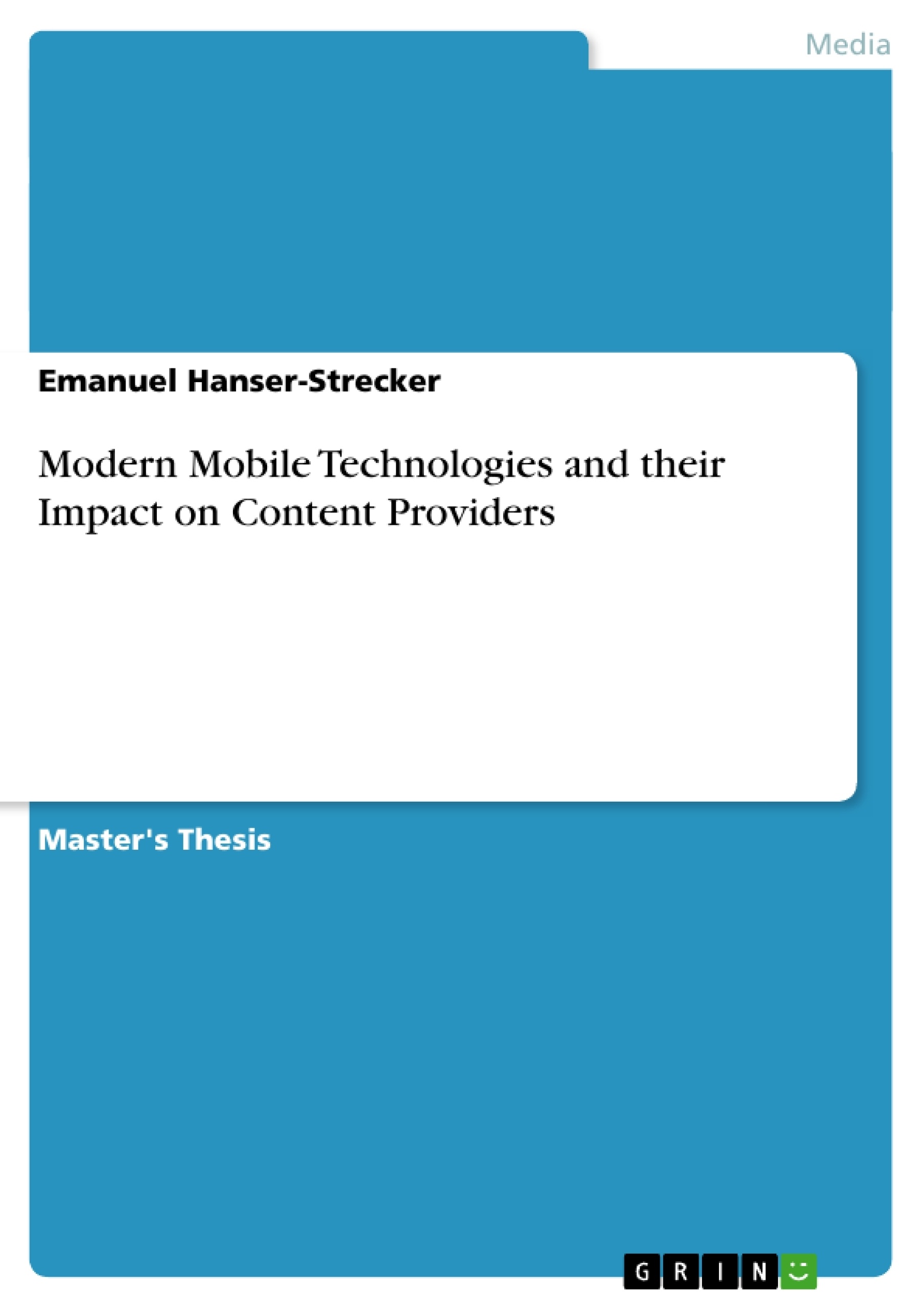The acceleration of technological developments in wireless networks up to 3G and beyond, as well as in the production of multi-purpose handsets has given rise to a large variety of content offerings. As a consequence, content providers deployed continuous efforts to enhance their services by multi-media features, m-Commerce and wireless Web related applications. In order to consolidate indications resulting from theoretical research, a survey has been conducted in view of assessing future development prospects in the area of content services. The relevant impact on content providers has been defined in terms of competition, challenges, threats and opportunities. Under this latter aspect, it seems to be established that the “digital divide” is shrinking, at least in the field of mobile communications. In an outlook, patent-based innovation trends in tele-communications are outlined, as well as technological developments expected in mobile network configurations and handset specifications as related to specific forms of content. The economic prospects for the mobile “players”, namely content providers, seem to be more interesting in certain areas than in others, the consumer demand being largely driven by “technology readiness” which could lead to impressive shifts within the global market.
Inhaltsverzeichnis (Table of Contents)
- Acknowledgements
- Abstract
- Table of contents
- List of abbreviations
- List of tables and figures
- Introduction
- 1. Fundamentals
- 2. Multi purpose devices, their functions and basic services
- 2.1 Multi purpose devices
- 2.2 Communication - Voice / Video
- 2.3 SMS, MMS, and email
- 2.4 Camera and Video function
- 2.5 MP3 Player
- 2.6 Design Factor
- 3. Mobile content and content providers
- 3.1 Mobile content outline
- 3.1.1 Ringtones, Ringtunes and Ringbacks
- 3.1.2 Music/Audio-books
- 3.1.3 TV, video applications
- 3.1.4 Business applications
- 3.1.5 Games
- 3.1.6 Information services, location and tourist services
- 3.1.7 Online services (WAP)
- 3.1.8 Other services
- 3.2 Content providers and content management
- 3.2.1 Main content providers
- 3.2.2 Content management
- 3.2.3 Billing
- 3.1 Mobile content outline
- 4. Research - Survey
- 4.1 Collection Method
- 4.2 Scope and Limitations
- 4.3 Participants
- 4.4 Results
- 5. Impact on content providers:
- 5.1 Challenges and Opportunities
- 5.1.1 Challenges
- 5.1.2. Opportunities
- 5.2 Competition and Threats
- 5.3 Viruses and Protection
- 5.1 Challenges and Opportunities
Zielsetzung und Themenschwerpunkte (Objectives and Key Themes)
This thesis examines the impact of modern mobile technologies, including 3G and beyond, on content providers. The research focuses on the evolution of multi-purpose handsets and their influence on content offerings. The study investigates the challenges and opportunities facing content providers, particularly in terms of competition and threats. It also explores the implications of mobile technology advancements on the global market, with a specific focus on the role of "technology readiness" in driving consumer demand.- Impact of 3G and beyond on content providers
- Challenges and opportunities for content providers
- Competition and threats in the mobile content market
- Role of technology readiness in driving consumer demand
- Economic prospects for content providers in an evolving global market
Zusammenfassung der Kapitel (Chapter Summaries)
- Introduction: This chapter provides a general overview of the research topic and its significance. It sets the stage for the investigation of modern mobile technologies and their influence on content providers.
- 1. Fundamentals: This chapter presents a theoretical framework for understanding the basics of mobile technologies. It examines the evolution of wireless networks, from 2G to 3G and beyond, and explores the technological advancements driving this evolution.
- 2. Multi Purpose Devices, Their Functions and Basic Services: This chapter delves into the features and functions of multi-purpose handsets, highlighting their role as central platforms for mobile content consumption. It explores various functionalities, including communication, SMS, MMS, camera, video, and MP3 player capabilities.
- 3. Mobile Content and Content Providers: This chapter examines the diverse range of content offerings available on mobile devices. It categorizes different types of content, including ringtones, music, video, business applications, games, information services, and online services. It also investigates the role of content providers in managing and distributing this content.
- 4. Research - Survey: This chapter outlines the methodology used to collect data for the study. It describes the survey design, including the collection method, scope, limitations, and participant demographics. The chapter presents preliminary findings from the survey, highlighting key trends and patterns observed in the data.
- 5. Impact on Content Providers: This chapter examines the implications of modern mobile technologies on content providers. It analyzes the challenges and opportunities they face, including competition, threats, and the need to adapt to an evolving mobile landscape.
Schlüsselwörter (Keywords)
The key focus topics of this thesis include the impact of modern mobile technologies, including 3G and beyond, on content providers, the evolution of multi-purpose handsets, challenges and opportunities for content providers, the role of technology readiness in driving consumer demand, and the economic prospects for content providers in an evolving global market.- Quote paper
- Emanuel Hanser-Strecker (Author), 2006, Modern Mobile Technologies and their Impact on Content Providers, Munich, GRIN Verlag, https://www.grin.com/document/56491



